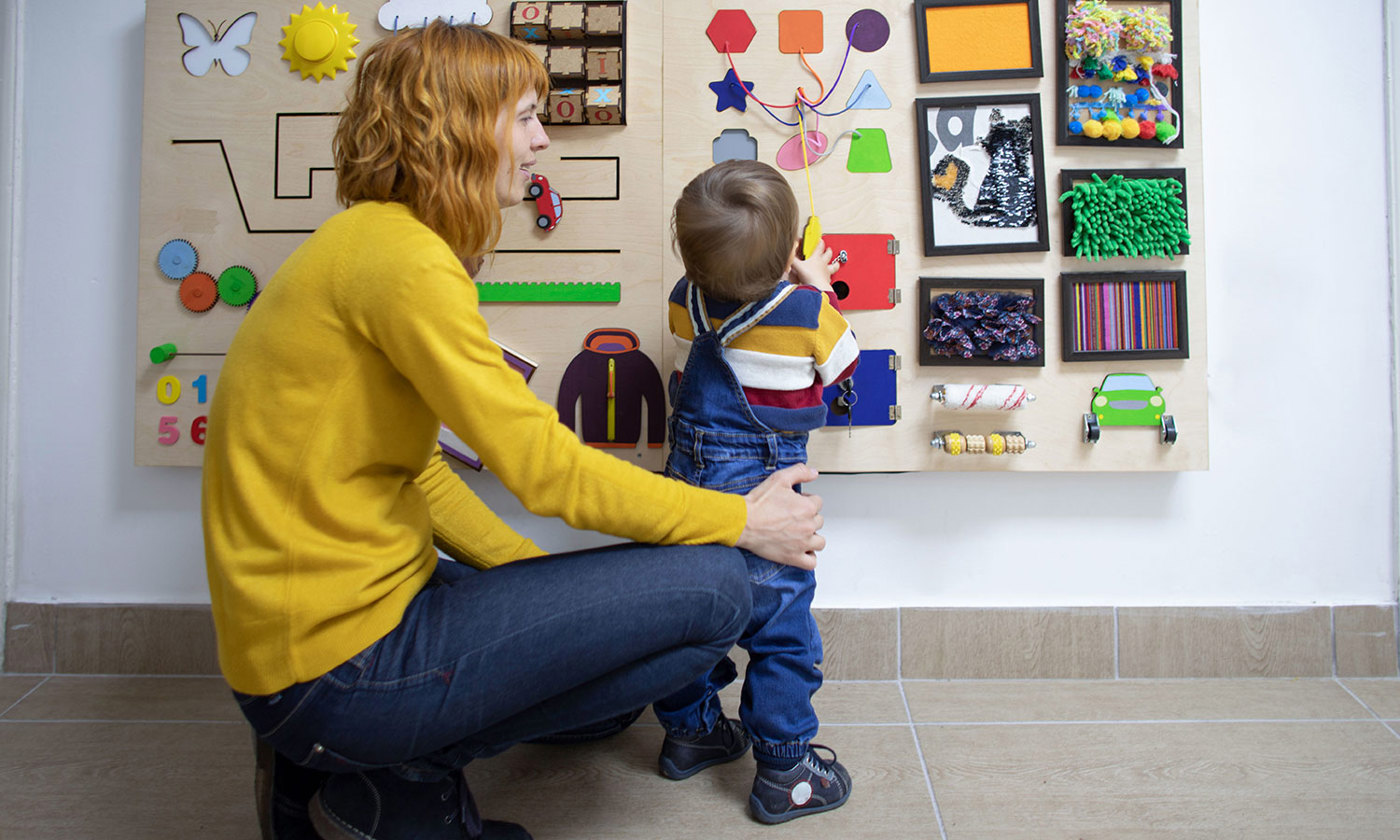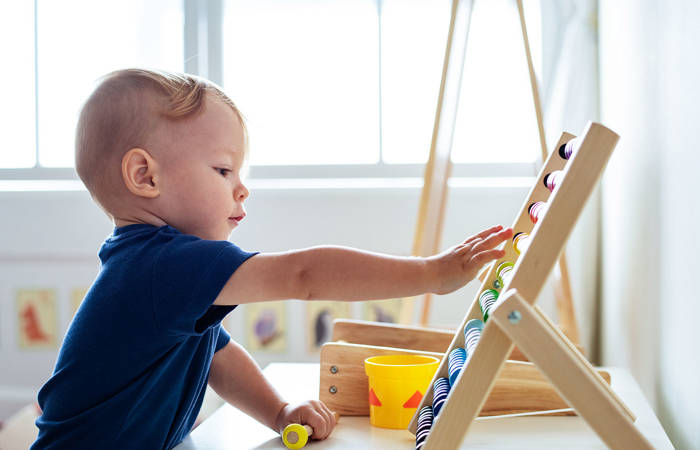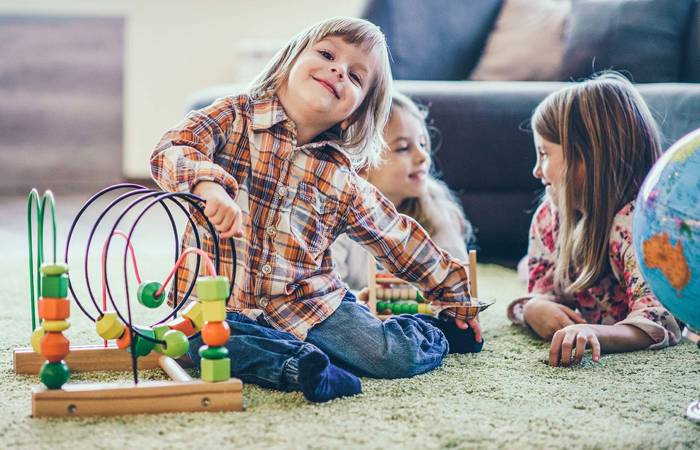Like what you see?
Sign up to receive more free parenting advice.
Thank you for subscribing to our newsletter!
Child Development

Credit: iStock.com/mmpile
If your child has a sensory issue, you’ll usually notice it during the toddler years. It might be an extraordinary aversion to noise or light, or they might get upset if their clothing feels irritating or too tight.
Others might have more extreme aversions such as screaming when they are being bathed or having a tantrum while you’re helping them get dressed.
Some reports suggest that one in every six children has sensory processing difficulties. In certain groups, such as children with autism spectrum disorder, or Down syndrome, the prevalence ranges from 80-100 percent.
Recognising sensory sensitivities
Sensory issues or sensory overload in children can be difficult to recognise, especially if there is no co-occurring condition. Some parents and caregivers may blame the child’s actions on “bad behaviour” because it can cause children to be irritable or to have regular tantrums.
Children with sensory processing difficulties can be over-responsive or under-responsive to a particular sensory input. For example, if a child is overresponsive to bright lights or loud sounds, they’ll respond by covering their ears and closing or squinting their eyes.
According to Jade Sheen, Associate Professor in Clinical Psychology, Deakin University, children vary in how they experience the sensory world.
“Some children are sensitive to the sensory world, meaning that they take in too much information. This may result in feeling overwhelmed or distressed,” Associate Professor Sheen says.
“But it is important to make a distinction here. Some individuals are sensitive to the sensory world but experience no further concerns. These youngsters are not addressed in the DSM (The Diagnostic and Statistical Manual of Mental Disorders) but the term Sensory Processing Disorder has been used by some.
“For psychologists, we typically see sensory sensitivity in individuals with a trauma background or those with Autism Spectrum Disorders. It’s difficult to say how common the issue is because it depends on the specific group. But I believe that due to education and advocacy from specific interest groups, our awareness of the needs of children with sensory sensitivities, including those with ASD, has improved.”
Some children are sensitive to the sensory world, meaning that they take in too much information. This may result in feeling overwhelmed or distressed.Associate Professor Jade Sheen
Stay up to date with the latest news and articles from First Five Years
Thank you for subscribing to our newsletter!
Sensory sensitivity triggers
Professor Sheen says parents are usually quick to identify exactly what will trigger their sensory sensitive child, whether it be lights, sounds or how some fabrics feel against their skin.
“Parents typically report distress in certain sensory environments, for example loud cafes, or avoidance, such as refusing to wear certain clothes. They’ll also notice changes in behaviour, for example, putting their hands over their ears as indicators of sensory sensitivity,” Associate Professor Sheen says.
“And many normally developing children will experience sensory sensitivity. These children will generally outgrow the sensitivity and it rarely acts as a barrier to their engagement with the world.”
Professor Sheen says for individuals with clinical conditions such as ASD, sensory sensitivities tend to be more impactful, last longer and result in feelings of stress and anxiety.
“In these circumstances I would suggest that parents need to act as advocates for their children to reduce the challenges and accommodate to the needs of the child wherever possible,” Professor Sheen says.
“But they also need to help the child to accommodate to the environment wherever necessary. Graded exposure can be useful to assist.”
Raising a sensory sensitive child
Melanie is the mother of a four-year-old boy with sensory sensitivities. She says it’s heartening to see that awareness of the condition has greatly improved over the years.
“For example, at Christmas time, our local shopping centre had a special time slot for a Santa visit for kids with sensory sensitivities. This meant I could take my son to see Santa, knowing there wouldn’t be any bright lights or loud music that might trigger an upsetting episode,” Melanie says.
“I first suspected my son had sensory sensitivities when he was around 18 months old because he’d have huge tantrums around almost any noise – even if his elder brother was just calling his name.
“He is also very sensitive to any clothing that is too tight and even being in the car is difficult as he will react to the radio or even when I put the car’s indicators on. It is easier now that we all know his triggers and can manage his reactions in the times that it’s not possible to stop a sound that upsets him.
“It’s not easy to have a child with sensory sensitivities but I like to think that I am proof that it is manageable once you’re fully aware of what is going on.”
There are additional challenges for parents of some sensory sensitive children when they start going to early learning and preschool.
Associate Professor Sheen suggests parents stay in close contact with carers and teachers so they’re in the best position to manage the child’s issues.
“In cases where the sensory concerns are more significant and long lasting, they may impact a child's integration into environments such as school and childcare. Education facilitates will make reasonable accommodations to support students learning so it is important to work with your care team to identify your child’s sensory triggers and develop a collaborative and consistent plan,” Professor Sheen says.
“Psychologists often work with sensory sensitive children and their families, discussing ways to accommodate to their triggers and/or needs or develop graded exposure plans to slowly increase their tolerance of specific sensory experiences. Occupational Therapists can also be involved in understanding a child’s sensory profile and their specific triggers and/or needs.”







